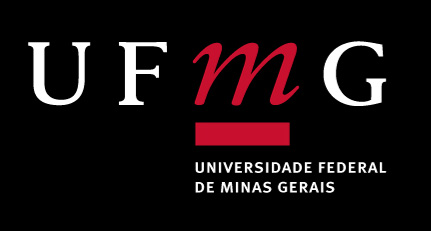Contribuições do modelo de regressão não-linear logarítmico aplicado à análise de perfis longitudinais em geomorfologia fluvial
DOI:
https://doi.org/10.35699/2237-549X..13457Palavras-chave:
Geomorfologia fluvial, Modelagem estatística, Regressão não-linearResumo
Este trabalho trata sobre o comportamento geométrico de perfis longitudinais e sua recorrente associação enquanto indicador sobre as condições hidrodinâmicas em geomorfologia fluvial. Na literatura é recorrente a investigação sobre perfis em equilíbrio (graded profile) resultarem em assumir uma curvatura logarítmica linear negativa de concavidade que se atenua em direção jusante. Todavia, a simples observação morfológica do perfil não é suficiente para indicar as condições entre erosão, deposição e distribuição de energia no sistema. Neste contexto este artigo apresenta o método estatístico de regressão nãolinear logarítmico como instrumento para avaliar quantitativamente o quanto o perfil longitudinal de dado curso fluvial se aproxima do perfil ideal de equilíbrio, bem como indicar possíveis condicionantes que possam estar influenciando sua geometria. Como cenário são utilizados os principais afluentes que drenam parte do divisor hidrográfico das bacias dos rios das Velhas e Paraopeba, em Minas Gerais. Nesses afluentes o método se revela adequado como instrumento para avaliar a geometria dos perfis longitudinais, bem como o arcabouço geológico é o principal condicionante que sugere influenciar a morfologia dos perfis, ao passo que a variabilidade da cobertura pedológica se revela como indicador da maneira como o curso d’água possa dissecar a superfície.
Referências
BARROS, L.F.P.; MAGALHÃES JÚNIOR, A.P.; RAPOSO, A.A. Fatores condicionantes da produção e escoamento de sedimentos na bacia do rio Maracujá – Quadrilátero Ferrífero/MG. Revista Geografias, v.6, n.2, p.102-117, 2010.
CARLSTON, C.W. Longitudinal slope characteristics of rivers of the Midcontinent and the Atlantic East Gulf Slopes. International Association of Scientific Hydrology. Bulletin, v.14, n.4. p.21-31. 1969; DOI: 10.1080/026266669094937 51.
CHARLTON, R.O. Fundamentals of Fluvial Geomorfophology. Nova York, ed. Routledge, 275p. 2008.
CHRISTOFOLLETI, A. Geomorfologia. Edgard Blücher: São Paulo, 1980.
COMPANHIA DE DESENVOLVIMENTO ECONÔMICO DE MINAS GERAIS – CODEMIG; COMPANHIA DE PESQUISA DE RECURSOS MINERAIS - CPRM. Mapa geológico do estado de Minas Gerais, 2014, Escala 1:1.000.000.
DAVIS, W.M. The geographical cycle. The Geographical Journal. v.14, n. 5, p. 481-504, 1899. COPAM/CETEC. Secretaria de Ciência e Tecnologia. Diagnóstico Ambiental de Minas Gerais. Belo Horizonte, Mapa geomorfológico, escala 1.1.000.000, 1982.
DOWNS, P. W.; SIMON, A. Fluvial geomorphological analysis of the recruitment of large woody debris in the Yalobusha River network, Central Mississippi, USA. Geomorphology, v. 37, p. 65-91, 2001.
EMPRESA BRASILEIRA DE PESQUISA AGROPECUÁRIA - EMBRAPA. Sistema Brasileiro de Classificação de solos. 3 ed. ver. Ampl. Brasília, DF: Embrapa, 353p. 2013.
FILHO, C.O.A. FONSECA, L.M.G. Lineamentos estruturais a partir de imagem Landsat TM e dados SRTM. In: SIMPÓSIO BRASILEIRO DE SENSORIAMENTO REMOTO, 14. . 2009, Natal. Anais... Natal: INPE, 2009, p.3151-3158.
FUNDAÇÃO ESTADUAL DE MEIO AMBIENTE - FEAM, UNIVERSIDADE FEDERAL DE VIÇOSA - UFV. Mapa de solos de Minas Gerais, 2010, Escala 1:610.000.
GILBERT, G.K. Report pf the geology of the Henry Mountains. Geographical and Geological Survey of the Rocky Mountain Region, Government Printing Office, Washington DC, 1877.
GREGORY, K.J.; WALLING,D.E. Drainage Basin Form and Process: a geomorphological approach. Bedford Square, London: Edward Arnold,1979. 458 p.
HARTVICH, F. Analysis of the longitudinal profiles of selected rivers in the Šumava Mts., Southwest Bohemia. Miscellanea Geographica 11/2005, p.13-30, 2005.
HASUI, Y. Quadro geral da evolução pré-ordoviciana: a conexão Brasil-África. In: HASUI, Y.; CARNEIRO,C.D.R.; ALMEIDA, F.F.M.; BARTORELLI, A. Geologia do Brasil. São Paulo: Editora Beca, 2012. Cap. 8, p.123-130.
HOFFMAN, M. GIS-based Analysis of Geo-Potentials for a Tropical Metropolitan Area: the Northern Periphery of Belo Horizonte (Minas Gerais, Brazil). Tese de doutorado, TU Darmstadt, 333p, 2014. Disponível em: <http://tuprints.ulb.tudarmstadt.de/4152URN:urn:nbn:de:tudatuprints-41522>. Acesso em: 10 out. 2016.
HOWARD A.D.; KIRBY G. Channel changes in badlands. Geological Society of American Bulletin, v.94, p.739-752, 1983. KING, L.C. Geomorfologia do Brasil Oriental. Revista Brasileira de Geografia, v.18, n.2, p.147-265, 1956.
LANGBEIN, W.B.; LEOPOLD, L.B. QuaseEquilibrium states in channel morphology. American Journal of Science, v. 262, p. 782-794, 1964.
PHILLPS, J.D.; LUTZ, J.D. Profile convexities in bedrock and alluvial sreams. Geomorphology, v.102, p.554-566, 2008.
PETERNELLI, L.A. INF 162, curso de estatística, capítulo 9: Regressão linear e correlação. Disponível em: < http://www.dpi.ufv.br/~peternelli/inf162.www.16032004/index.html>. Acesso em: 20 out. 2016.
RÃDOANE, M.; RÃDOANE, N. DUMITRIU, D. Geomorphological evolution of longitudinal river profiles in the Carpathians. Geomorphology, n.50, p. 293-306. 2003.
RIBEIRO, J.H.; TULLER, M.P.; FILHO, A. D.; PADILHA, A. V.; CÓRDOBA, C. V. Projeto VIDA: mapeamento geológico, região de Sete Lagoas, Pedro Leopoldo, Matozinhos, Lagoa Santa, Vespasiano, Capim Branco, Prudente de Morais, Confins e Funilândia, Minas Gerais - relatório final, escala 1:50.000. 2a ed.; Belo Horizonte: CPRM, 54p., Mapas e anexos (Série Programa Informações Básicas para Gestão Territorial – GATE, versão digital e convenção), 2003.
RODRIGUES, S. C. A. Modelo de regressão linear e suas aplicações. Relatório de estágio para obtenção do Grau de Mestre em Ensino de Matemática no 3º Ciclo do Ensino Básico e no Ensino Secundário. Universidade da Beira Interior, Covilhã, 70p., 2012.
SAMPAIO, T.V.M.; AUGUSTIN, C.H.R.R. Índice de Concentração da Rugosidade: uma nova proposta metodológica para o mapeamento e quantificação da dissecação do relevo como subsídio a cartografia geomorfológica. Revista Brasileira de Geomorfologia, v.15, n.1, p. 47-60, 2014.
SCHUMM, S. The relation of drainage basin refiel to sediment loss. International Association of Scientific Hydrology. v.36, p.216-219.
SCHUMM, S.A.; LICHTY, R.W. Time, space and Casuality in Geomorphology. American Journal of Science 263: p.110-119, 1965.
SELANDER, J. ,Influences On River Morphology In A Sediment-Dominated System. Chapter Four, p.1-13, Mobogenie.Com/DownloadSoftware, 2004.
SINHA, S.K.; PARKER, G. Causes of concavity in longitudinal profiles of rivers. Water resources Research. v.32, n.5. p. 1417-1428, 1996.
SKLAR, L.; DIETRICH, W.E. 1998. River longitudinal profiles and bedrock incision models: stream power and the influence of sediment supply. See Tinkler & Wohl p, 237– 260, 1998.
SHOBBENHAUS,C. CAMPOS,D.A. A evolução da Plataforma Sul-Americana no Brasil e suas principais concentrações minerais. In: SHOBBENHAUS,C.; CAMPOS, D.A.; DERZE, G.R.; ASMUS,H.E. coords. 1984. Geologia do Brasil. Texto Explicativo do Mapa Geológico do Brasil e da área oceânica adjacente incluindo depósitos minerais. Escala 1:2.500.000, Brasília: DNPM, p.9-53, 1984.
THEULE, J.J.; LIÉBAULT, F.; LAIGLE, D.; LOYE, A.; JABOYEDOFF, M. Channel scour and fill by debris flows and bedload transport. Geomorphology. v. 243, p. 92-105, 2015.
ZEVIANI, W. M.; RIBEIRO JÚNIOR, P. J.; BONAT, W. H. Curso Modelos de regressão não linear. Laboratório de Estatística e Geoinformação, Departamento de Estatística, Universidade Federal do Paraná, 101p., 2013.
Downloads
Publicado
Edição
Seção
Licença
Copyright (c) 2017 Revista Geografias

Este trabalho está licenciado sob uma licença Creative Commons Attribution 4.0 International License.
Os artigos desta revista obedecem a licença Creative Commons — Attribution 4.0 International — CC BY 4.0









